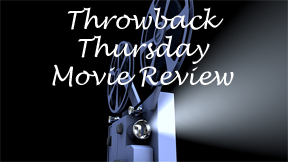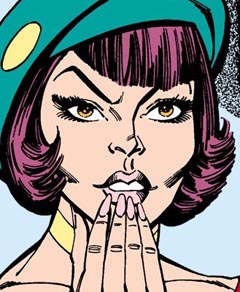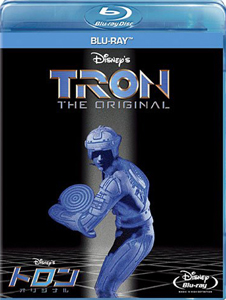“Tron” (1982) is a touchstone movie in the history of digital effects, as it uses about 15 minutes of computer-created graphics to represent the inside of a computer system, where heroes Flynn (Jeff Bridges), Alan/Tron (Bruce Boxleitner) and Lori/Yori (Cindy Morgan) strive to reach the memory core to retrieve pivotal data.
Today, this is worth a shrug, but the process was absurdly complex and expensive at the time. Motion animation didn’t exist, therefore each frame was created individually. Also, printing of computer animation to film didn’t exist; therefore the finished animation was run on a computer and the screen was filmed.
“Tron” is worth a watch for anyone interested in special-effects history, but – although an intellectually rich exercise – it might bore people seeking no-excuses entertainment.

“Tron” (1982)
Director: Steven Lisberger
Writers: Steven Lisberger, Bonnie MacBird
Stars: Jeff Bridges, Bruce Boxleitner, David Warner
Writer-director Stephen Lisberger’s story is simple: Dillinger (David Warner) has plagiarized several computer games from his colleague Flynn and used their success to climb to the top of the corporate ladder (and fire Flynn, who now operates an arcade). Dillinger hid the evidence deep in the computer’s memory.
Elsewhere in the corporation, Alan and Lori have devised a laser that can transport things, much like the transporter beam in “Star Trek.” Flynn conveniently gets struck by the laser and goes into the corporation’s computer system.
A bleak world in a box
Although only 15 minutes of “Tron” is CGI, most of the film is set inside a computer; most of it is filmed practically, but in an unusual fashion. Some viewers might be mesmerized by the totality of the computer world, devised by such visionaries as Syd Mead (“Blade Runner”) and French comic book artist Jean “Mobius” Giraud. But I wished for more escapes (pun intended) back to reality.
I find the computer space to be an ugly, washed-out world, a comedown from the vibrancy of Flynn’s bustling real-world arcade. The actors – whose looks and performances almost get lost in the bleak space — are shot in black and white on black-box stages. George Lucas would use this process for his “Star Wars” prequels two decades later, filling in the backgrounds via computer.
But in “Tron” it’s just a black background, and depth (and our ability to see what’s happening) is provided by LED lights on the characters’ suits and the sparse furnishings. While this emptiness can feel unappealingly foreboding if you wanted a fun adventure romp, it’s appropriate. Eighties computers tended to have black backgrounds and glowing green or white type, not merely when typing in commands, but also when using word-processing programs.
Lisberger’s main interest was perhaps to enrich viewers’ feel for the computer world (scary to laypeople at the time) via metaphor. (Another visionary who was excited about the rise of home computers, Michael Crichton, had that goal when he wrote “Electronic Life” one year later.)

Influence on ‘The Matrix’ and more
Once inside the computer, Flynn – a User – becomes his own avatar, a precursor to the real-world/digital-world interfacing of “The Matrix” and “Avatar.” But he’s the only direct avatar. Tron is the Program for the User Alan, Yori is the Program for the User Lori, and Sark is the Program for the User Dillinger. It would’ve been nice to have cutaways to the Users at their computers both for clarity and a reprieve. Bizarrely, we don’t see even one shot of the Users tickling their keyboards.
Programs see Users as gods, the same way humans (Users) see gods as gods. Perhaps accidentally, Lisberger makes a crisp argument for simulation theory (the belief that reality is a simulation run by a higher power we can’t comprehend), simply through “Tron’s” metaphors.
He also brushes up against the concept of artificial intelligence, as we see the Master Control Program (voiced by Warner, since Dillinger gave it his voice) consolidating Programs into itself and then derezzing the original Program. It’s tyranny via control of information, another forward-looking fear.
Viewers more familiar with computers might get more out of the metaphors and visual stand-ins. One of the transport vehicles within the computer world is a Recognizer, for instance, and from a Program’s POV, derezzing is the equivalent of death.
If this bores some viewers, “Tron” still has value in world-building. I’m looking forward to watching the subsequent films – 2010’s “Tron: Legacy” and this year’s “Tron: Ares.” I anticipate the digital world will be more beautiful and colorful due to advancing special effects technology, and we’ll go deeper into the good and bad of living in an increasingly digital world.

